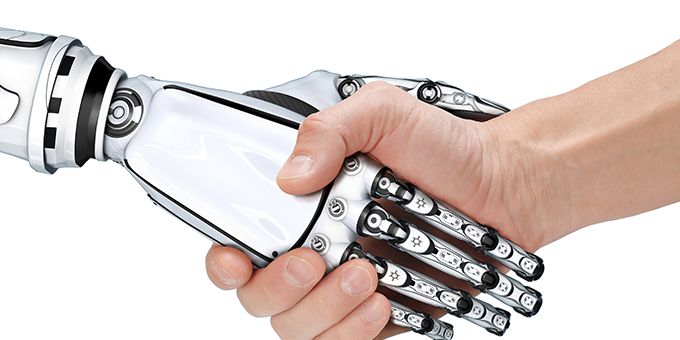There have been talks of surgical robots since as early as 1985. While the medical sector has taken significant steps since then to implement such technology, major barriers are still evident.
 The Doctor Will See You Now - Exploring the Future of Surgical Robots
The Doctor Will See You Now - Exploring the Future of Surgical Robots

Mark Howard, US Country Manager | EU Automation
Industrial robots are already assisting in general medicine, after rapid adoption by hospitals in the United States and Europe. These robots are sterilizing medical equipment and monitoring patient data in real-time, as well as being used successfully in specific hospital departments such as laparoscopy, orthopaedics and neurology. Surgical robots are improving patient outcomes, with certain procedures now minimally invasive compared to previous methods.
Check out the DaVinci robot, which famously performed surgery on a grape in a viral video back in 2010. Today, the robot has performed over six million procedures across the globe. This robotic assisted system enables surgeons to perform delicate and complex operations through a few small incisions.
There’s a reason that this robot took the medical world by storm – with seven axes of movement , the robot is vastly superior to the four grades of tools available with conventional laparoscopy.
While DaVinci’s robotic surgical systems has already demonstrated improved surgical techniques and outcomes, other robots arriving to market may create a unique set of risks and patient safety concerns.
In robotic-assisted surgeries (RAS), the console, made of two binocular lenses that magnify and create a three-dimensional image for the surgeon, uses handpieces that transmit the hand movements to the instruments inside the patient. Not only is there potential for human error when operating this technology, an added risk of mechanical failure is also introduced.
RAS has been also been found to take significantly longer than nonrobotic procedures, when performed at hospitals that have a lower robotic volume and by surgeons with less experience. Precision robotic surgery is still in its infancy due to the reliance of operator precision and building the right hospital infrastructure for surgeons to master robotic procedure.
There are varying studies of exactly how many surgeries are required to grasp the robotic learning curve, with the number differing between each procedure. For hysterectomies, a range of 20-50 cases is reported to master the operation, and for robotic-assisted laparoscopic prostatectomies, the range has been reported from as low as 40 to as many as 250.
In the future, robotic-assisted technology will continue to spearhead a number of advancements in key areas of healthcare. This new wave of technology will be characterized by the convergence of AI, surgical robotics and data acquisition. However, the high costs associated with implementing these technologies may continue to be one of the biggest barriers in the uptake of digitalization in the medical industry.
Additionally, new capabilities of surgical robots could allow surgeons to see and “feel” a body’s tissue from a separate location. This is known as haptic sensing.
Haptic sensors, used for giving force-feedback, is probably the most requested technical feature by physicians around the US. It’s easy to see why. Out of the five senses, touch is the most proficient. It is the only sense capable of simultaneous input and output.
However, haptic feedback has remained rather unutilized due to practical challenges, such as control loop stability. With the importance of communicating the interaction between the instrument and the body being a key benefit of this technology, researchers have started to experiment with alternate displays, such as tactile devices and audio to present haptic information indirectly, without compromising stability.
Other sensors will also continue to make great strides. Haptic sensors aside, surgical robots will still need accelerometers and gyroscopes to track position, just as they’ll need torque sensors for motion control. Combined with intelligent software enabling predictive maintenance on these machines, the ease in replacing these sensors through an industrial automation supplier like EU Automation, means a significant saving in the robotic-assisted technologies budget.
As surgeons become increasingly more familiar with RAS and its capabilities, we could one day see these robots used in every hospital across the United States. Both patients and physicians will see the value in this technology, with its precision capabilities, enhanced microsurgery and shorter recovery times.
The content & opinions in this article are the author’s and do not necessarily represent the views of RoboticsTomorrow
Featured Product

